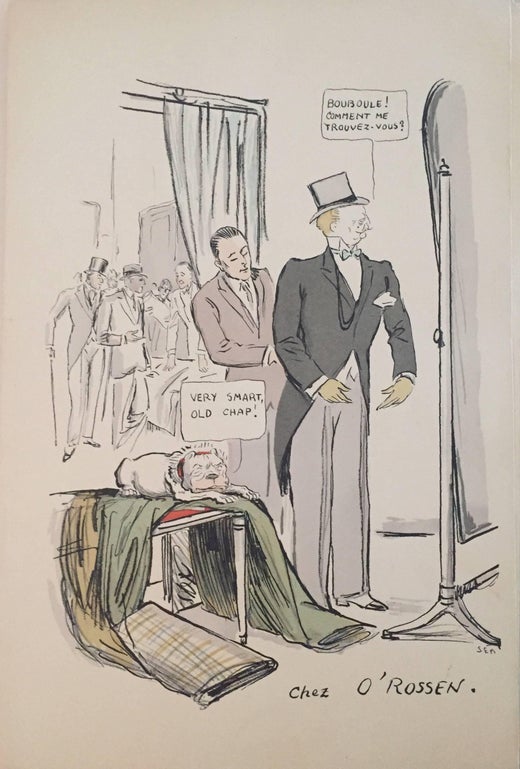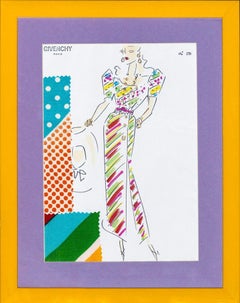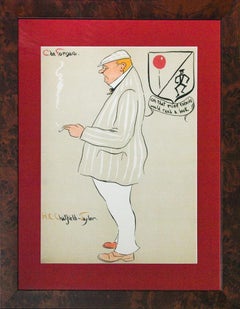Georges Goursat (Sem)Les Acacias SEM Folio
About the Item
- Creator:Georges Goursat (Sem) (1863, French)
- Dimensions:Height: 14 in (35.56 cm)Width: 41 in (104.14 cm)
- Medium:
- Period:
- Condition:
- Gallery Location:Bristol, CT
- Reference Number:Seller: 334181stDibs: LU126017096842
Georges Goursat (Sem)
Georges Goursat was a French caricaturist known as Sem. In 1888, Goursat self-published three albums of caricatures, signing them Sem. It is thought that this was in tribute to the early 19th-century French caricaturist and lithographer Charles Amédée de Noé, who signed his caricatures for the periodical “Le Monde Illustré” as "Cham." A charming and talented man, Goursat was working in Paris at the time of the opening of the Universal Exposition in 1900, where the Art Nouveau style in architecture and decoration was hugely popular. His inspiration came from observing French high society enjoying life at restaurants, at the opera and at the races. Goursat actually chose horse racing as his way of entry to French "Beau Monde." Just three months after his arrival to Paris he self-published an album titled “Le Turf” with caricatures of many prominent Parisians. The success of this album made him famous overnight. Goursat supported himself selling illustrations both humorous and serious to the French major periodicals of the day. He put together albums of caricatures depicting high society in Monte Carlo, Deauville, the Cote d’Azur, and Paris. He wrote articles and created posters illustrating the tourist towns of Deauville, Cannes and Monte Carlo. His art is particularly associated with the Belle Epoque and his unique style of drawing brought him great success and fame.
You May Also Like
2010s Contemporary Figurative Prints
Board, Mixed Media, Permanent Marker, Lithograph, Offset
1890s Naturalistic Figurative Drawings and Watercolors
Lithograph
Mid-20th Century Surrealist Figurative Prints
Engraving, Lithograph
Mid-19th Century Abstract Expressionist Abstract Prints
Lithograph
Mid-20th Century French School Prints and Multiples
Lithograph
2010s Contemporary Figurative Drawings and Watercolors
Lithograph, Etching, Paper
2010s Contemporary Figurative Drawings and Watercolors
Paper, Lithograph
Mariam Okribelashvili Georgian Contemporary Art by Mariam Okribelashvili - Spiritual Matters 1, 2024
1980s Performance Figurative Drawings and Watercolors
Lithograph
1980s Performance Figurative Drawings and Watercolors
Lithograph
1970s Figurative Drawings and Watercolors
Paper, Lithograph
More From This Seller
View All1910s Figurative Drawings and Watercolors
Lithograph
1980s Figurative Drawings and Watercolors
Gouache, Lithograph
1910s Figurative Drawings and Watercolors
Lithograph
Early 1900s Figurative Drawings and Watercolors
Pencil, Lithograph
1930s Figurative Drawings and Watercolors
Pencil, Lithograph
20th Century Figurative Drawings and Watercolors
Watercolor, Lithograph




